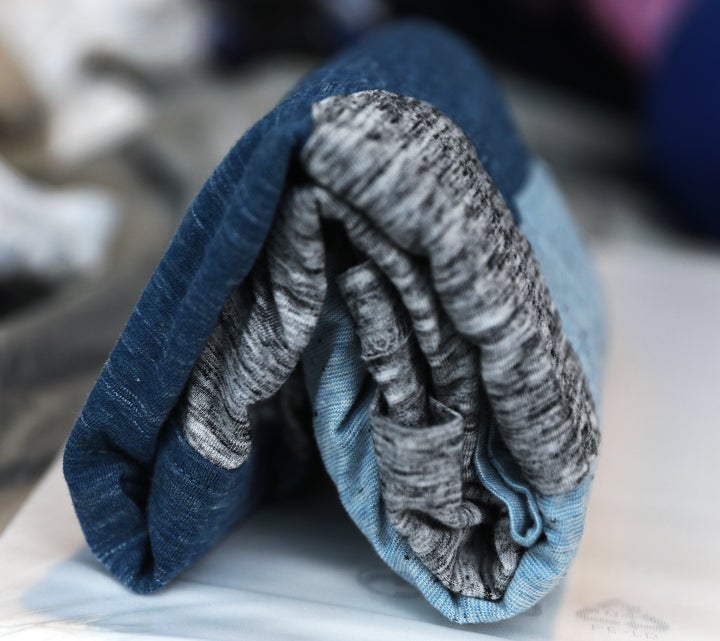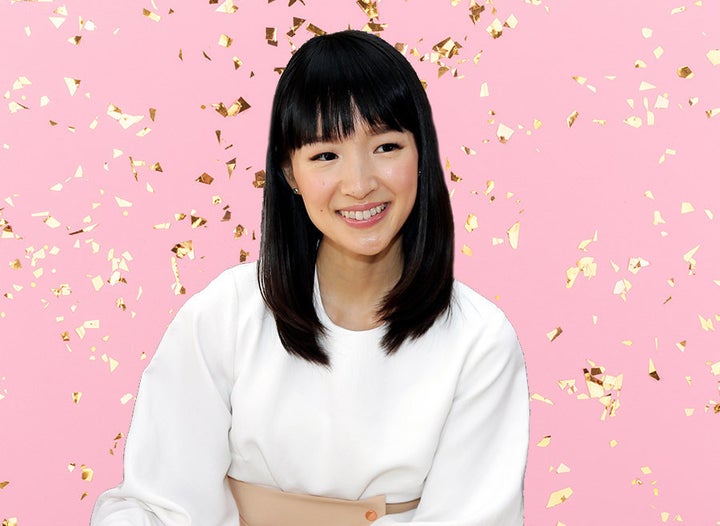To kick off 2019, Americans are making big piles of all their possessions, holding items to see if they “spark joy,” and then sending anything that doesn’t make the cut to either the trash heap or the thrift store.
The tidying craze is inspired by Netflix’s show “Tidying Up With Marie Kondo,” an extension of Kondo’s cultishly popular 2014 book, The Life-Changing Magic of Tidying Up: The Japanese Art of Decluttering and Organizing.
Kondo’s cleaning method encourages people to interrogate their relationships with their things, with the hope of transforming those relationships for the better and making people think twice before bringing a new item home.
This is done in part by acknowledging the role the old object has played in the owner’s life, thanking it for its service, and then either discarding it or taking it “into the future” to be joyfully used again.
For KonMari acolytes, decluttering can help them confront and control the overwhelming abundance in their everyday lives, while rediscovering meaningful objects buried beneath accumulated detritus. Episodes depict subjects tearfully rediscovering old wedding photos, and finding a parent’s diary about being interned in a Japanese-American camp during World War II.
But there’s one group of people for whom Kondo’s guiding principle — does it spark joy? — could potentially backfire: those who have a compulsive hoarding problem.

The Enabling Magic Of Tidying Up
Elizabeth Nelson, 44, grew up in a large, five-bedroom home outside Chicago. The house, which included an unfinished basement, was at least 2,500 square feet. But the only place she had enough space to do her homework was her own bed. She was never allowed to invite others over to her home, and any attempts she would make to declutter her own room would be stymied by her mother, who struggled with compulsive hoarding disorder ― a condition that constricted Nelson’s entire childhood.
“I think that quite honestly, Marie Kondo’s approach would be wonderful from my mother’s perspective,” Nelson said. “Because my mother would eagerly and happily explain to Marie Kondo how wonderful and happy all of her things were.”
Nelson is the co-founder of an online support group and awareness-raising organization called Children of Hoarders. Having seen Kondo’s new show, she worried that for people with hoarding tendencies, the encouragement to interact physically with their stuff could help them convince themselves that, yes, each item is important, and therefore make them less — not more — likely to get rid of it.
“Because my mother would eagerly and happily explain to Marie Kondo how wonderful and happy all of her things were.”
- Elizabeth Nelson
Researchers estimate that about 2 to 5 percent of the population deals with compulsive hoarding disorder. Hallmarks of the disorder include difficulty parting with possessions, no matter their value, clutter so extreme that it makes living areas and furniture unusable, and mess that interferes with daily functioning and safety.
Christiana Bratiotis, an assistant professor at University of British Columbia and co-author of The Hoarding Handbook: A Guide For Human Service Professionals, agrees with Nelson that some people with hoarding disorder might enjoy an opportunity to show off what they say are their most prized possessions. But she also points out that there are some aspects of Kondo’s method that are similar to the evidence-based practices that mental health experts use to treat people with compulsive hoarding disorder.
For instance, considering one’s possessions by category and making sure that every item has a permanent, visible, easily accessible home are strategies that clinicians like Bratiotis use when helping patients.

The Line Between Disarray And Disorder
But of course, Kondo’s method is not intended to be used as clinical treatment for people with hoarding disorder — nor does the organization expert make such a claim. And there are important differences between the two.
One difference is a practical one: People with a serious hoarding problem often can’t gather all of the items of one category into a single pile in a room, because all of their rooms and possessions are not fully accessible.
A more fundamental divergence is that the approaches emphasize different — and potentially opposing — values, and are carried out according to different orders of operation. Kondo’s approach is spiritual (inspired by Shinto beliefs) and object-centered, asking clients to go through their possessions one by one and to be guided to action by the feelings each object arouses in them in the moment.
Cognitive behavioral therapy, the treatment with the most scientific backing for treating hoarding disorder, focuses first on a person’s underlying cognitive and emotional barriers, before tackling their physical stuff, said Bratiotis.
“One of the things that drives saving, among people who hoard, is that they have erroneous beliefs about their objects,” she said. These beliefs include anxiety- and fear-based thoughts like, “I might need it again someday,” or, “as soon as I get rid of it, I’m going to need it again.”
“That level of anxiety is a significant differentiator between someone who has lived experience with hoarding and somebody who just needs to tidy up,” Bratiotis added.
Only once those distorted thought patterns are addressed can people with hoarding disorder begin the long process of cleaning out their home.
When they first begin to declutter, people with hoarding disorder will take a very long time to consider and make a decision about any one object because of how anxious they are.
“That level of anxiety is a significant differentiator between someone who has lived experience with hoarding and somebody who just needs to tidy up.”
- Christiana Bratiotis
Each episode of “Tidying Up” takes place over about four to six weeks, during which time the homeowners completely purge their house from top to bottom. The typical outpatient behavioral therapy program for hoarding disorder stretches across 26 weeks.
While some of the homes that Kondo visits are in a formidable state of disarray and may suggest that some homeowners have the beginnings of a hoarding problem, Bratiotis notes that the fact that clients appear to quickly and easily discard their possessions is a strong sign that they do not suffer from hoarding disorder, which is quite rare.
Kondo’s advice to see whether an object “sparks joy” is a positive approach for the average person who wants to purge belongings, said Dr. Pauline Wallin, a clinical psychologist who practices in Camp Hill, Pennsylvania, and author of the book Taming Your Inner Brat: A Guide for Transforming Self-Defeating Behavior.
It’s a reframing of the psychology around decluttering that emphasizes the positive value of keeping something as opposed to loss aversion, or being motivated to avoid losing something, she said.
“‘Give me one compelling reason why I should keep this,’ rather than, ‘what happens if I get rid of this?’” Wallin said. “Clutter is uncomfortable to look at, but the idea of losing that stuff and losing our options about it tends to create anxiety.”
Wallin also pointed out that at a time when TV audiences are riveted by reality shows about hoarding and extreme home makeovers, Kondo’s show offers its subjects something of subtler value.
“[Kondo] allowed the couple to be in control,” she said.
That’s important to Nelson, too.
She now lives in Ann Arbor, Michigan, with her husband and two teen boys.
Unlike some other children of hoarders, she didn’t react to her upbringing by embracing a minimalist lifestyle. She considers her home tidy, but cluttered — and considers herself a potentially good candidate for Kondo’s show.
“A lot of the messaging of people like Marie Kondo is really, really valuable in terms of telling people, ’You have control over this ― you can’t let this stuff control you,’” Nelson said.
